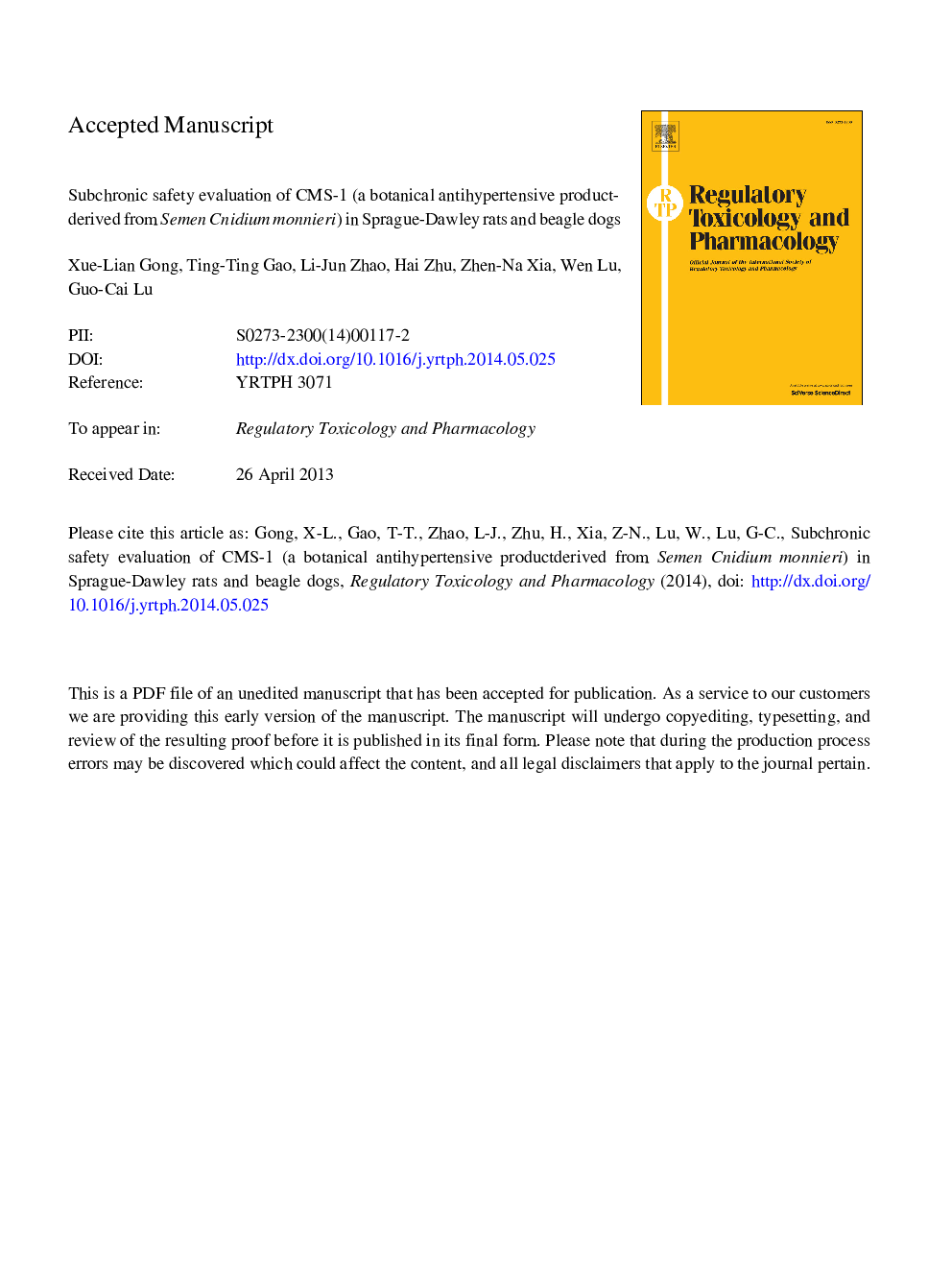| Article ID | Journal | Published Year | Pages | File Type |
|---|---|---|---|---|
| 5857083 | Regulatory Toxicology and Pharmacology | 2014 | 46 Pages |
Abstract
CMS-1, mainly composed of imperatorin as its active compound, is a partially purified fraction of a Chinese herbal medicine, Semen Cnidium monnieri. CMS-1 has the potential to be further developed as a new treatment for hypertension. Thus, we studied its toxicity in both Sprague-Dawley rats and beagle dogs. Rats (0-900Â mg/kg/day) and dogs (0-450Â mg/kg/day) received CMS-1 orally for 30 consecutive days, followed by a 15-day recovery period. The major target organs of CMS-1 toxicity are the GI (inappetence), liver (hepatocellular necrosis, enzyme elevation), thymus (atrophy), cardiovascular (hypotension), changes in ECG T and P waveforms, elevation of nitrous oxide levels and hematological (RBC parameters disturbances) systems. Most treatment-induced adverse effects were reversible or showed a progressive recovery upon discontinuation of the treatment. The No Observed Adverse Effect Level (NOAEL) was 100Â mg/kg/day for rats and 50Â mg/kg/day for dogs. This non-clinical study suggests that clinical monitoring of CMS-1 in patients should focus on the gastrointestinal system, blood tests for liver functions, electrolytes, and blood homeostasis, cardiovascular functions, and immune functions.
Related Topics
Life Sciences
Environmental Science
Health, Toxicology and Mutagenesis
Authors
Xue-Lian Gong, Ting-Ting Gao, Li-Jun Zhao, Hai Zhu, Zhen-Na Xia, Wen Lu, Guo-Cai Lu,
